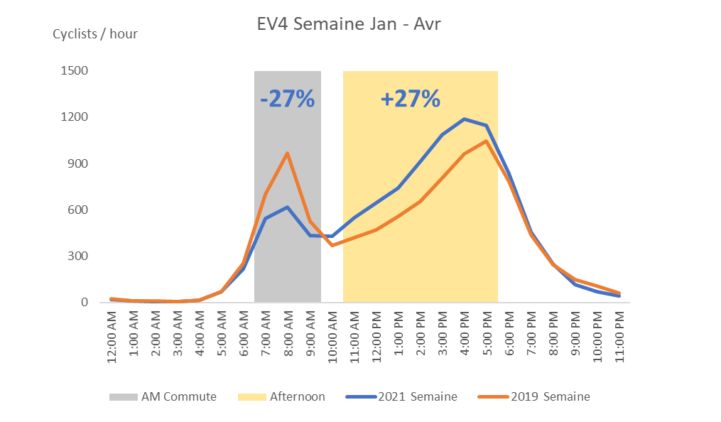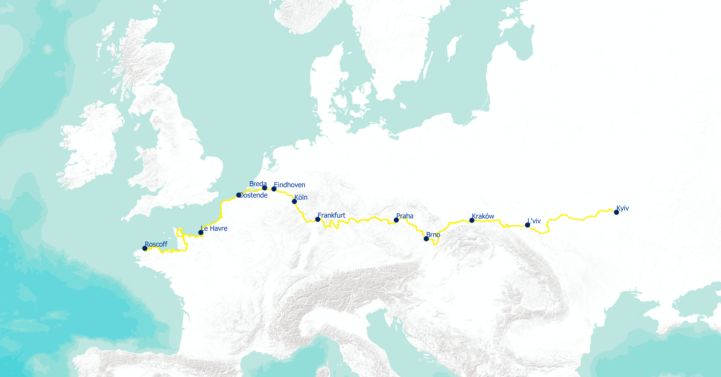Despite the Pandemic, Cycling Increases on the EuroVelo Network in 2021

The cycling boom that has translated into increased cycling levels all around Europe, skyrocketing bike sales, and new infrastructure being put in place everywhere on the continent, is also visible on EuroVelo, the European network of long-distance cycling routes. According to a new analysis carried out by Eco-Counter in partnership with the European Cyclists’ Federation, cycling levels on the network have increased by 16% on weekends, 3% on weekdays, and 6% in total, in the period from January 2021 to April 2021, compared with the same period in the pre-pandemic year 2019.
The analysis is based on data from Eco-Counters comprehensive network of automatic counters. When interpreting these results, it is important to keep in mind that a lot of stay-at-home orders, mandatory working from home, etc. were in place during the first months of 2021, which reduced mobility, and especially commuting. Against this background, the fact that cycling levels still increased with 3% during weekdays is very impressive. The much larger effect during weekends, with an increase of 16%, is a strong indicator for the increased popularity of leisure cycling all across Europe.
Featured route in May: EuroVelo 4 – the Central Europe Route

On certain routes, the increase is even higher: This is the case of EuroVelo route 4, the Central Europe Route, where cycling increased with 8% during weekdays and 32% during weekends, for a total increase of 14% between 2019 and 2021 at the 22 counting sites in the sample for this route. It is interesting to look at the hourly bike use on weekdays and weekends to see where this growth is occurring, also taking into consideration the effects of the pandemic. On weekdays, there is much less of a commuting component in the morning in 2021 compared to 2019, while cycling from 10AM to 5PM has increased substantially. On weekends, the increase in cycling is noticed throughout most of the day.
EuroVelo 4 has a lot to offer for cyclists: It starts in Brittany, passes along the coast of Northern France, Belgium, goes on further through the Netherlands to Germany, the Czech Republic, Poland, and finishes in Kyiv. Cyclists on this diverse route can see outstanding medieval architecture like the Mont-Saint-Michel in Normandy or the Old Towns of Bruges in Flanders and Bamberg in Bavaria, and visit dynamic cities like Frankfurt, Prague, or Krakow. Still, it is easy to get away from the crowds and take in the beauty of nature, visiting France’s dramatic northern coastline and crossing through the fairy tale Bohemian Forest.

Information about data collection
This is the first publication of data on the usage of the EuroVelo network, based on a partnership between ECF and Eco-Counter. The two organisations have joined forces to work together closely in collecting, analysing and communicating data related to the EuroVelo network on the European level.
The aggregated results for the usage of the EuroVelo network so far this year are based on data from a sample of 170 automatic counters installed by Eco-Counter and its local partners. For the sample, we have selected counters where we found that there was a minimum level of representativity, both in number of counters and in number of countries along the route represented. This is currently the case for EuroVelo routes 1, 3, 4, 5, 6, 7, 8, 9, 15 and 17. We are planning to publish data on the usage of the network as a whole, and on featured routes, regularly from now on. In the future, we hope to be able to grow this sample and make it even more representative, as more counters are placed along the routes all around Europe.
Author: Holger Haubold